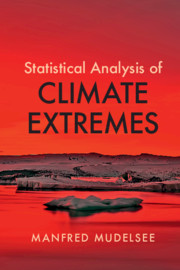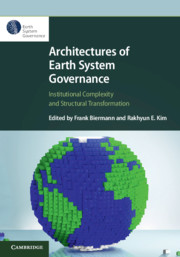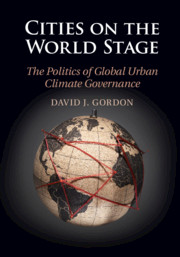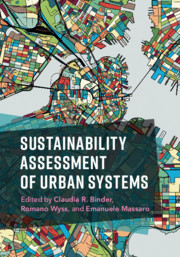Refine listing
Actions for selected content:
2285 results in Ebooks in ecology and environment
4 - Act I
-
- Book:
- Cities on the World Stage
- Published online:
- 16 April 2020
- Print publication:
- 07 May 2020, pp 111-138
-
- Chapter
- Export citation
Appendix B - List of Interviews
-
- Book:
- Cities on the World Stage
- Published online:
- 16 April 2020
- Print publication:
- 07 May 2020, pp 243-244
-
- Chapter
- Export citation
Copyright page
-
- Book:
- Architectures of Earth System Governance
- Published online:
- 17 April 2020
- Print publication:
- 07 May 2020, pp iv-iv
-
- Chapter
- Export citation
Part I - The Building Blocks
-
- Book:
- Architectures of Earth System Governance
- Published online:
- 17 April 2020
- Print publication:
- 07 May 2020, pp 35-116
-
- Chapter
- Export citation

Statistical Analysis of Climate Extremes
-
- Published online:
- 23 April 2020
- Print publication:
- 14 May 2020

Architectures of Earth System Governance
- Institutional Complexity and Structural Transformation
-
- Published online:
- 17 April 2020
- Print publication:
- 07 May 2020

Cities on the World Stage
- The Politics of Global Urban Climate Governance
-
- Published online:
- 16 April 2020
- Print publication:
- 07 May 2020

Sustainability Assessment of Urban Systems
-
- Published online:
- 27 March 2020
- Print publication:
- 26 March 2020
8 - Sustainability Solution Spaces
- from Part II - Integrative Approaches for Sustainability Assessment
-
-
- Book:
- Sustainability Assessment of Urban Systems
- Published online:
- 27 March 2020
- Print publication:
- 26 March 2020, pp 181-208
-
- Chapter
- Export citation
19 - Conceptualizing Urban Systems for Ecologic Sustainability Assessments: Case Study of the Stockholm Royal Seaport City District
- from Part IV - Focal Points of Urban Sustainability
-
-
- Book:
- Sustainability Assessment of Urban Systems
- Published online:
- 27 March 2020
- Print publication:
- 26 March 2020, pp 460-479
-
- Chapter
- Export citation
1 - Sustainability Assessment: Introduction and Framework
- from Part I - Theoretical Background
-
-
- Book:
- Sustainability Assessment of Urban Systems
- Published online:
- 27 March 2020
- Print publication:
- 26 March 2020, pp 7-29
-
- Chapter
- Export citation
17 - Sustainability Assessment of Urban Agriculture
- from Part IV - Focal Points of Urban Sustainability
-
-
- Book:
- Sustainability Assessment of Urban Systems
- Published online:
- 27 March 2020
- Print publication:
- 26 March 2020, pp 417-437
-
- Chapter
- Export citation
20 - A Study of Ride-Sharing Opportunities in the City of Santiago de Chile
- from Part IV - Focal Points of Urban Sustainability
-
-
- Book:
- Sustainability Assessment of Urban Systems
- Published online:
- 27 March 2020
- Print publication:
- 26 March 2020, pp 480-488
-
- Chapter
- Export citation
Acknowledgments
-
- Book:
- Sustainability Assessment of Urban Systems
- Published online:
- 27 March 2020
- Print publication:
- 26 March 2020, pp xi-xi
-
- Chapter
- Export citation
Contents
-
- Book:
- Sustainability Assessment of Urban Systems
- Published online:
- 27 March 2020
- Print publication:
- 26 March 2020, pp v-viii
-
- Chapter
- Export citation
5 - A Concept for Sustainability Transition Assessment (STA): A Dynamic Systems Perspective Informed by Resilience Thinking
- from Part I - Theoretical Background
-
-
- Book:
- Sustainability Assessment of Urban Systems
- Published online:
- 27 March 2020
- Print publication:
- 26 March 2020, pp 123-138
-
- Chapter
- Export citation
Part II - Integrative Approaches for Sustainability Assessment
-
- Book:
- Sustainability Assessment of Urban Systems
- Published online:
- 27 March 2020
- Print publication:
- 26 March 2020, pp 139-238
-
- Chapter
- Export citation
Part IV - Focal Points of Urban Sustainability
-
- Book:
- Sustainability Assessment of Urban Systems
- Published online:
- 27 March 2020
- Print publication:
- 26 March 2020, pp 351-502
-
- Chapter
- Export citation
2 - Systems Science and Sustainability Assessment
- from Part I - Theoretical Background
-
-
- Book:
- Sustainability Assessment of Urban Systems
- Published online:
- 27 March 2020
- Print publication:
- 26 March 2020, pp 30-64
-
- Chapter
- Export citation
Preface
-
- Book:
- Sustainability Assessment of Urban Systems
- Published online:
- 27 March 2020
- Print publication:
- 26 March 2020, pp ix-x
-
- Chapter
- Export citation
